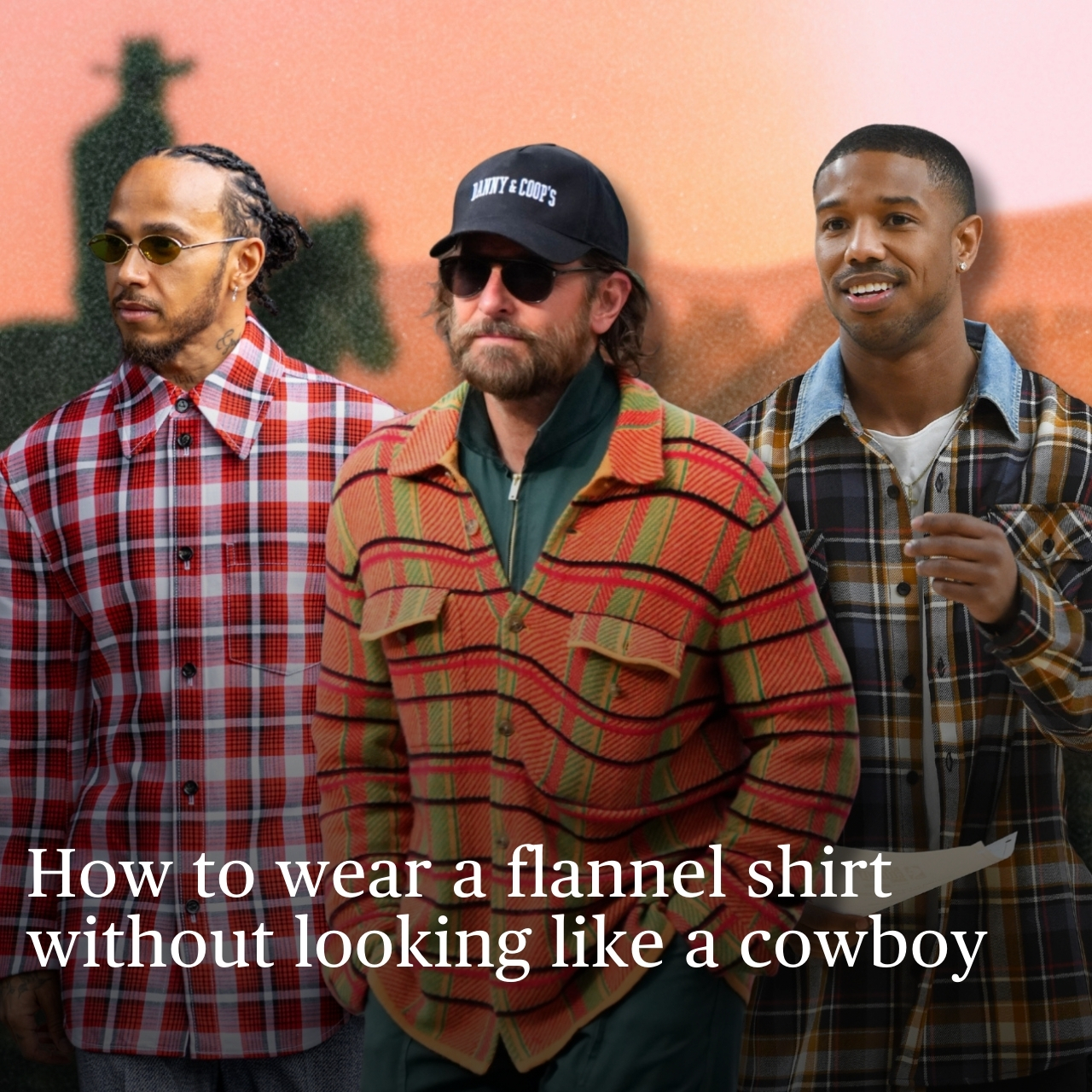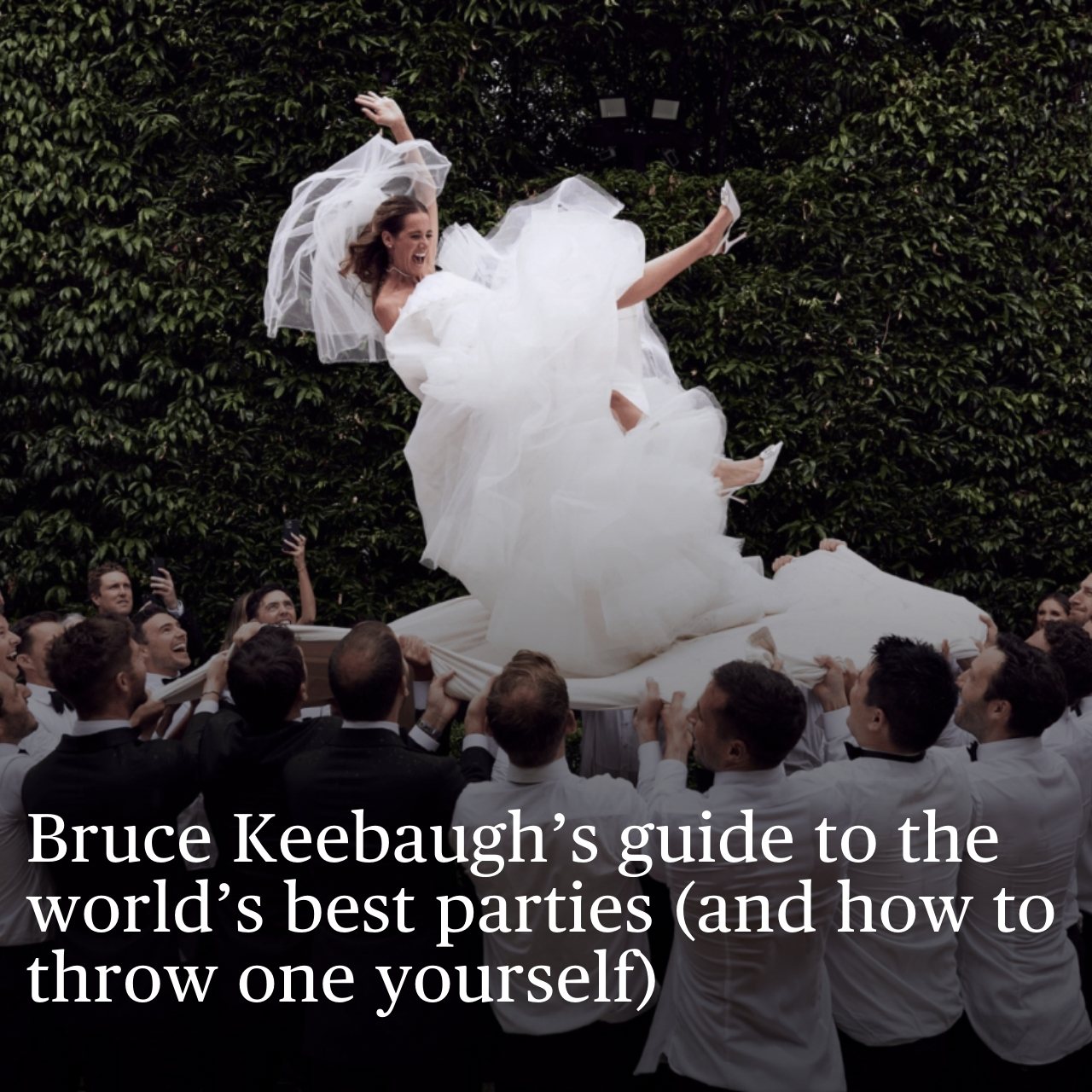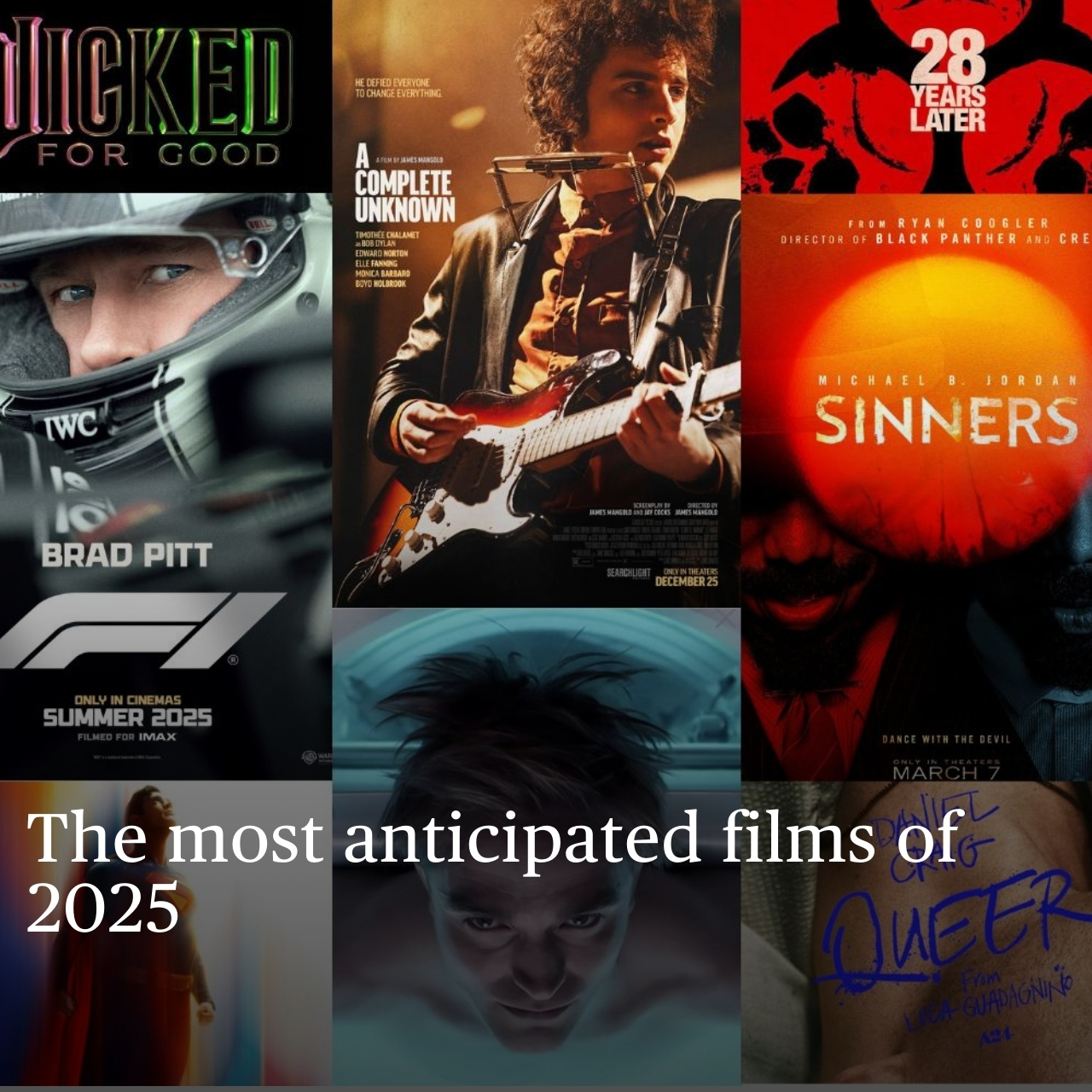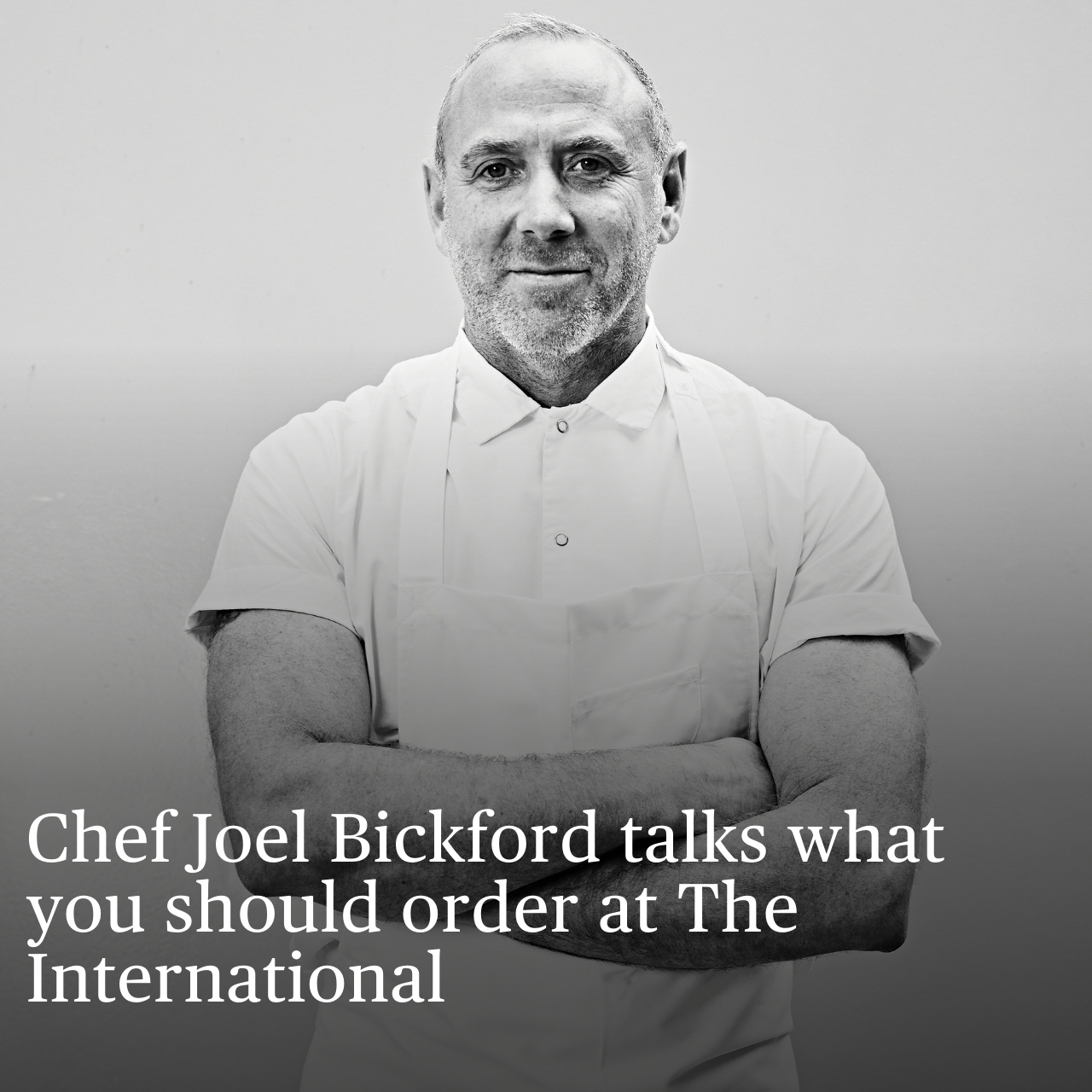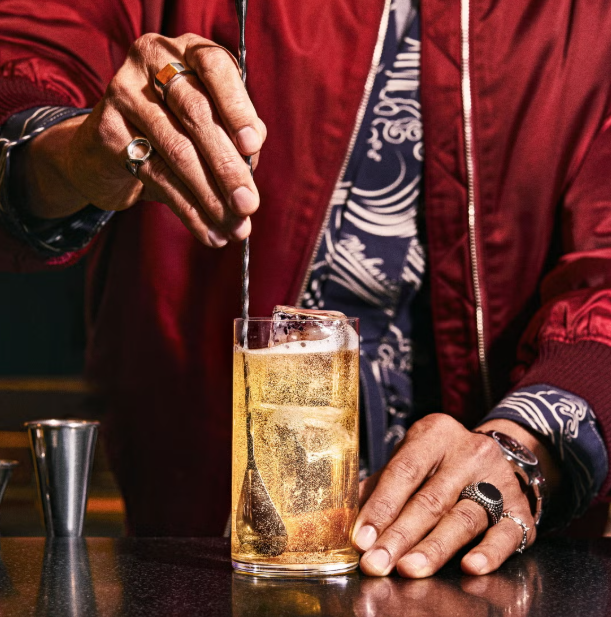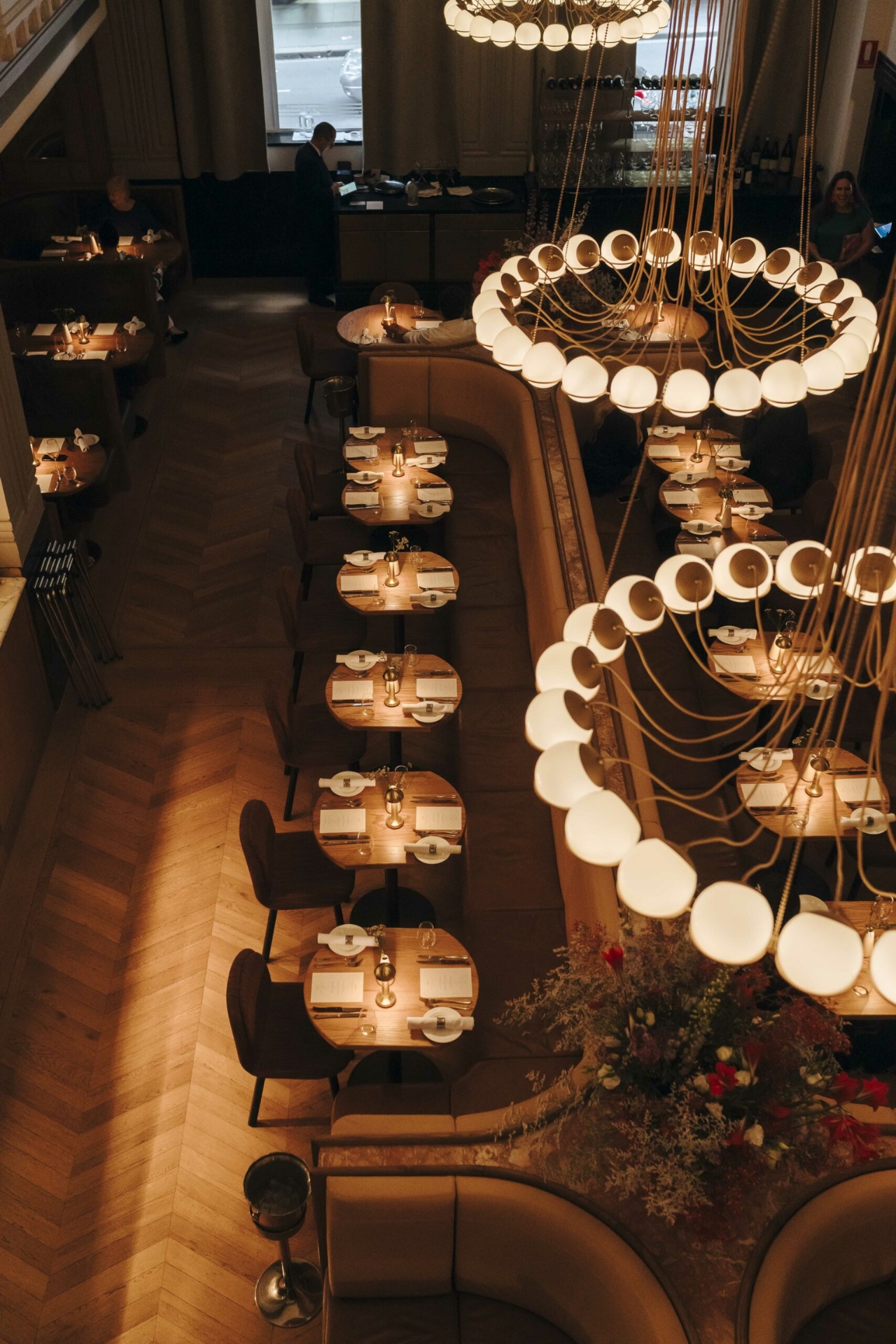Esquire Studio Sessions: Domus Vim, the sign-maker behind Sydney’s coolest restaurants
Ian Tran, the sign-maker behind some of Australia's favourite restaurants from Cafe Freda's to Ciao Fabbrica, has become the hospitality industry's go-to guy
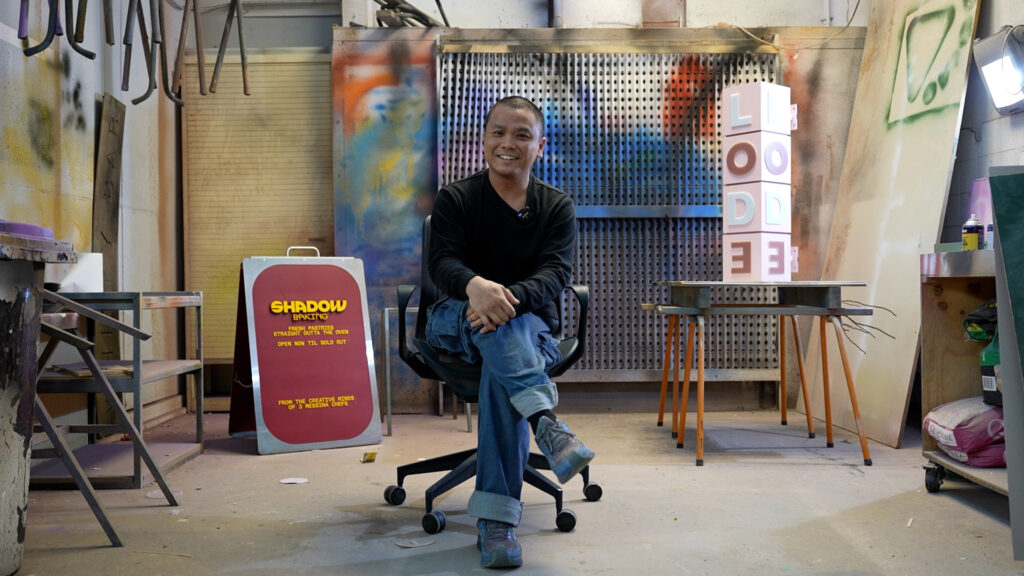
“I WOULD SAY the sign’s the smallest part of the restaurant,” says Ian Tran, aka design studio Domus Vim. “The sign comes in last, and it’s a nice part where everyone goes, ‘Yes, we’re here now’. It’s a point of place-making.”
Tran speaks modestly about his work, but his signs have helped define the visual identity of some of Sydney and Melbourne’s favourite culinary and cultural institutions. Striking as they are – clean, sleek laser-cut shapes that mix cold metal with playful shades of Perspex and acrylic – you can say his signs are a trusted road-map to the best places to eat in town.
What started as an architectural model-making company, Tran joined Domus Vim as an intern while studying architecture at university. At 20, he took over the business from its original owner, admitting in hindsight his little business acumen. But having grown up watching food videos on YouTube, he took it in a direction that melded his interests in food and culture, a way to work with “some of the greatest designers and brand makers in Sydney”.
Domus Vim remains a team of one, but Tran’s output has seen him collaborate with hospitality and culture giants, including A.P. Bakery, Bar Planet, Cafe Freda’s, Ciao Fabbrica, Mapo, and Swop, to name a few.
Watch Tran’s Studio Session below, and scroll on for the full interview, which has been edited and condensed for clarity, where he discusses his creative process, go-to restaurant, and dream collaborators.
On his design language and creative process
Coming from architecture, we are taught to draw our designs from the information provided on site or in context. So in the world of the restaurant, we are engaged with brand designers, graphic designers who have a very particular skill set. They provide you with the logo. We also look at the interiors, what the materials were chosen, maybe what the food style is. And all these kinds of little elements come together to form that design language or something that we can use, to make something that’s familiar to the site, I think.
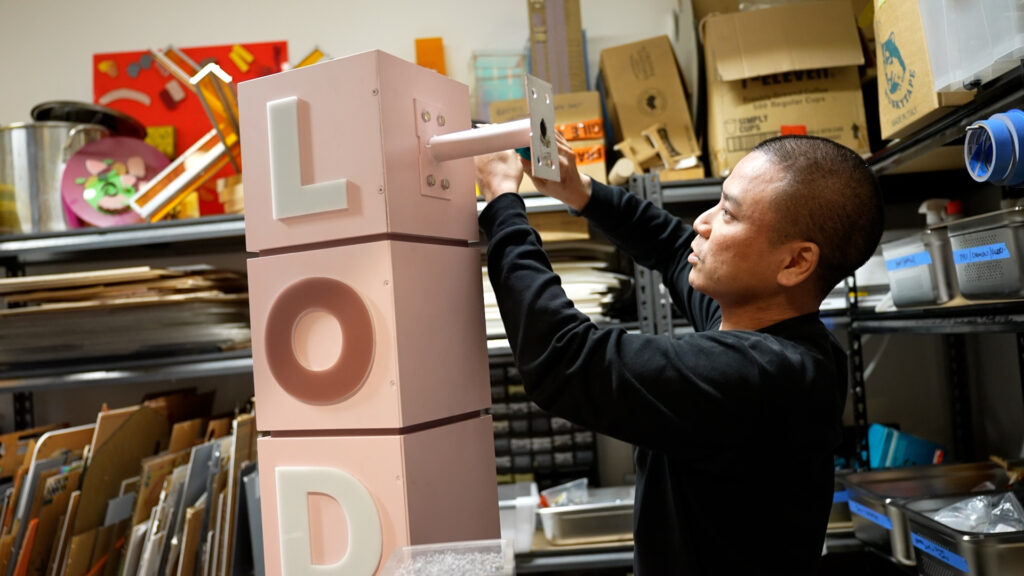
On the early years of Domus Vim
Domus Vim has been a part of my life for 12 years now. When I took over the business at 20, in hindsight, it was probably a terrible idea just because there was no business acumen at all. I was just going with the flow, trying to figure it out as I went on. But I think we’ve landed somewhere that I’m happy to work with. It’s nice to fall into a place where I’m working in an industry that I’m passionate about outside of work as well. Like if I’m not working, you’ll probably find me in a restaurant. So it’s nice to have that appreciation and respect for that industry as well.
For the first initial one or two years when I took over, I was always trying to continue someone else’s legacy, I was adamant on continuing the business as it was from when I took over. And I slowly learned that if I didn’t change it to something that I cared about, it would’ve never worked.
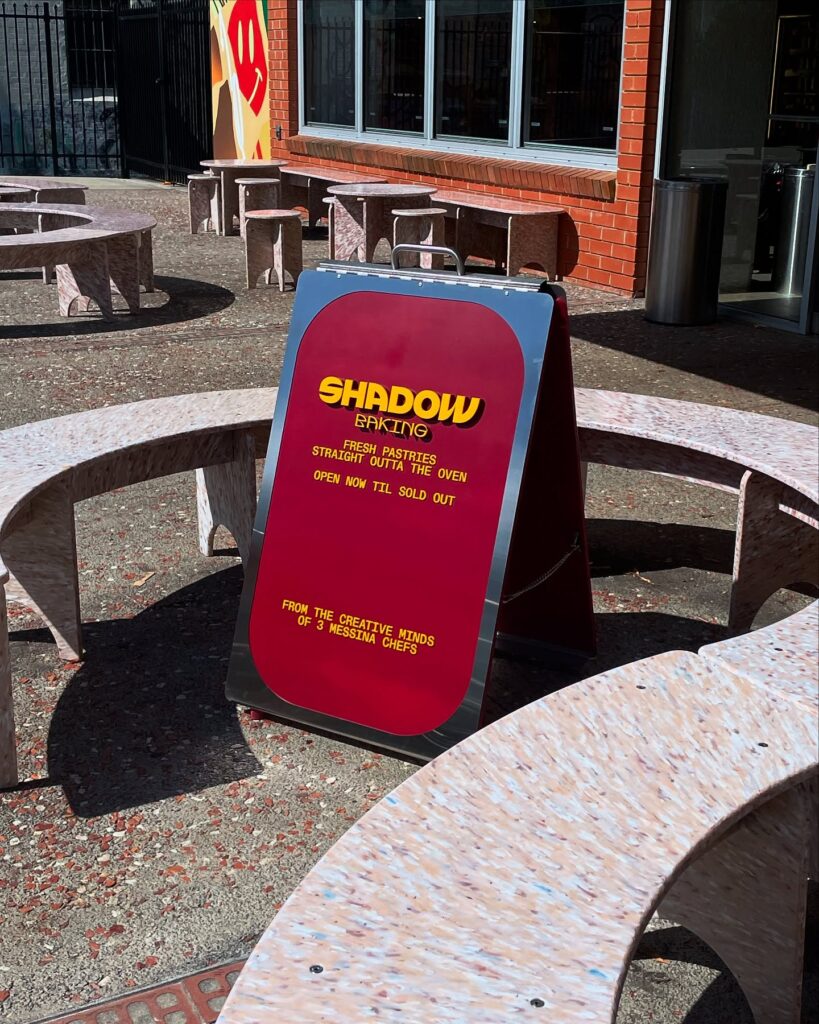
The project that started it all was Bar Planet, where we did a very simple vinyl on acrylic and that [the business] started to snowball. As the works have gone and developed, there’s more realisation that maybe I do have a skillset to design or translate information in my own way to create my own signs.
On his materials
Domus Vim started as an architectural model making company, so the majority of my skill set is within the Perspex or acrylics realm, which is great because for light boxes, it has that translucency to it. But as I’ve developed my skills in sign-making, I’m looking more towards stainless steel and aluminium to make frames and whatnot. For me, it’s an infinite learning curve. I’m never going to learn at all, but slowly and slowly we can learn a little bit more. That is definitely evident in the development and the evolution of how complex the signs that I’m making are.
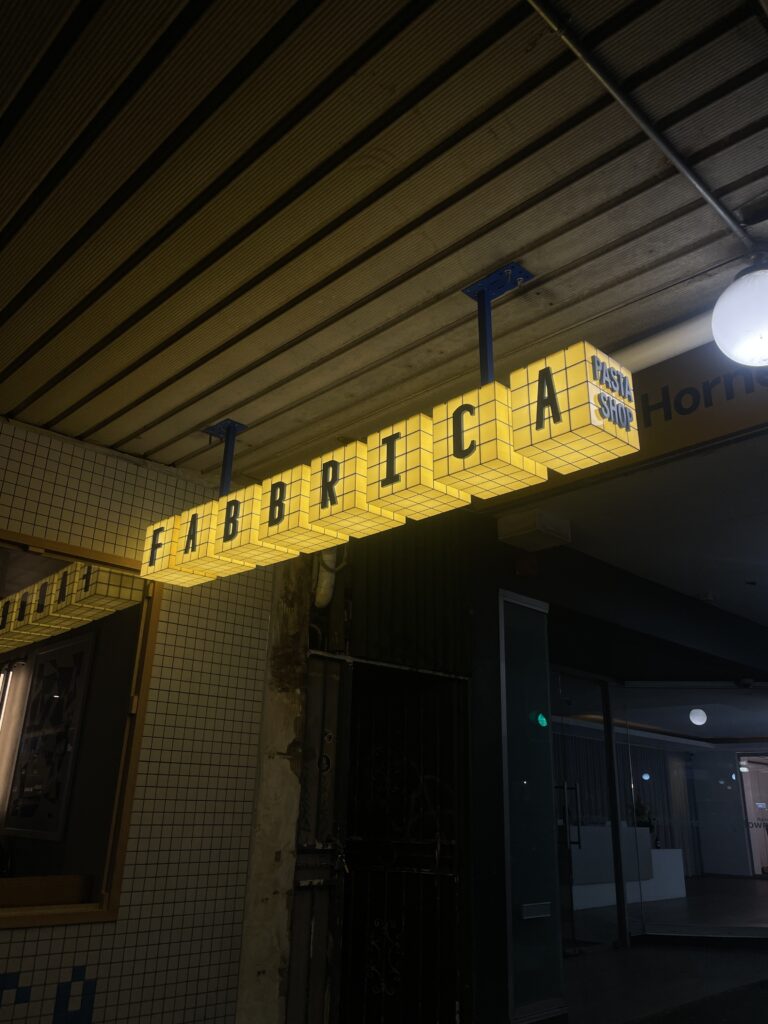
On the impact of his signs
I would say the sign’s the smallest part of the restaurant. I think the sign comes in last, and it’s a nice part where everyone goes, ‘Yes, we’re there now’. It’s a point of place-making. I’m taking information from the [restaurant] and trying to translate it into an image that captures that in maybe a split second as you’re walking down the street.
On his favourite designs over the years
I really enjoyed the Ciao Fabbrica sign in Newtown, which is a series of eight light boxes attached like a kebab stick. I really liked the Shadow Bakery one, which was done with Muriel and Mik from Studio MIMU. That was their direction, actually. More recently, we finished one for Almighty, the drinks company, which was a super cool drinks cart. It was a culmination of some skills that I’ve learned in the last month. So it was really enjoyable to see it realised as a product that I was like, ‘Oh, okay, we can do that’.
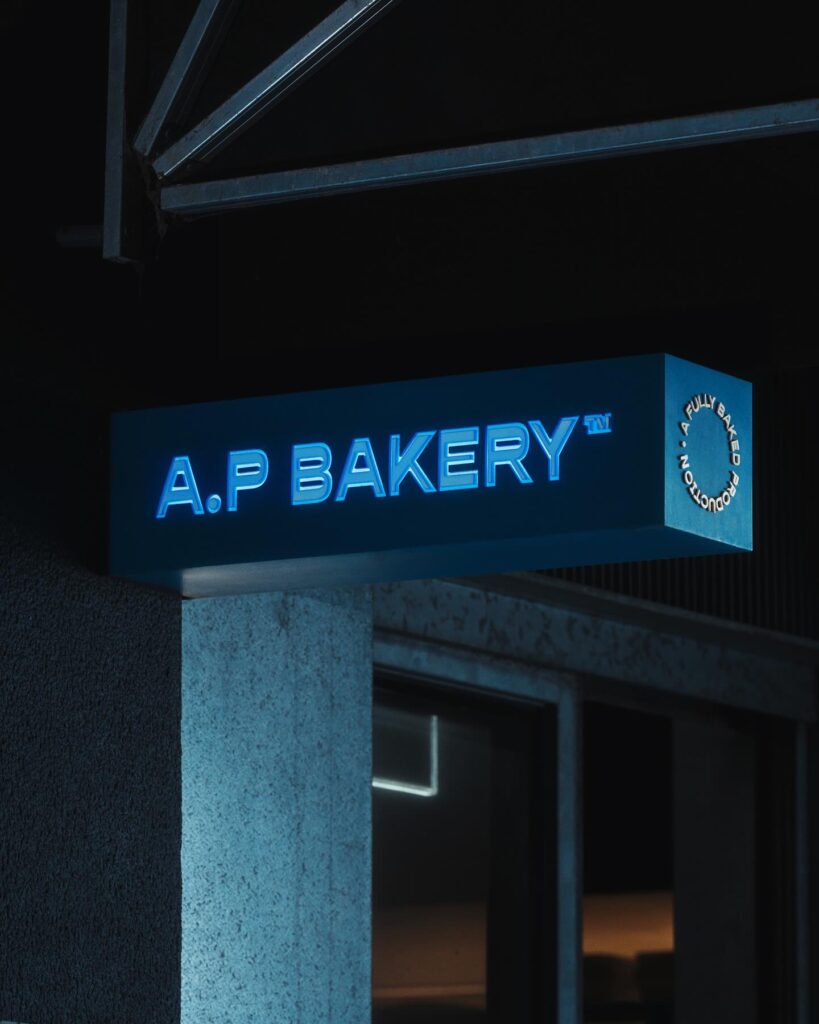
On his love of food
When I was in high school, I watched a lot of YouTube cooking videos. That was the time of Munchies, Vice, and Chef’s Night Out; it always looked so fun. I don’t think I was doing that in my life at the time. I was probably too young to be going out and eating at those restaurants and drinking, but it was always so interesting to watch those videos, and it just grew from that.
In food, you’re pretty much changing the medium of what designers do. The medium is food; you have to have this knowledge to transform an ingredient into something. I think that’s super fascinating to see in restaurants because you’re looking into someone’s brain for that split second to see how they translate to that. No one’s going to be the same.
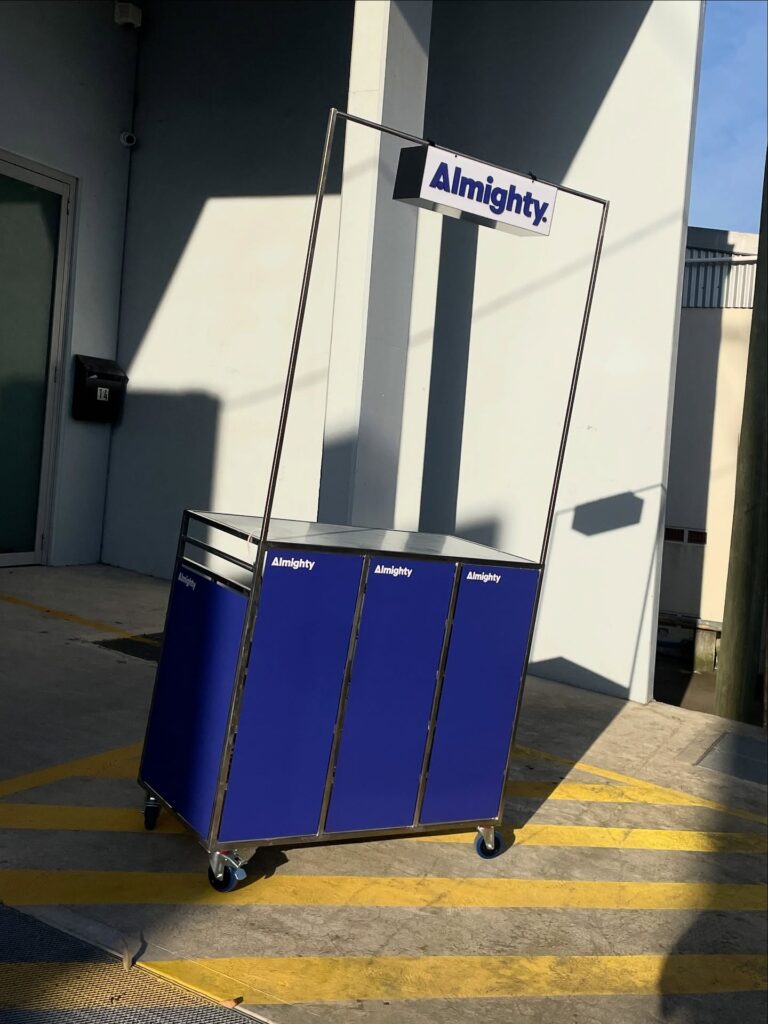
On his drink of choice and go-to restaurant
It’d be Club Fontana, a second serve. It’s like a Montenegro cocktail. But other than that, I’m mostly a beer person, XXXX. [Laughs.] High and low.
Sáng by MABASA in Surry Hills. That’s my favourite restaurant of all time. I eat there quite a lot. It’s a family-run restaurant showcasing Korean food that you don’t necessarily find [elsewhere]. We normally associate Korean food with party foods like fried chicken or Korean barbecue, but I think they’re highlighting the classics you would have at home and more traditional takes on dishes, which I really enjoy.
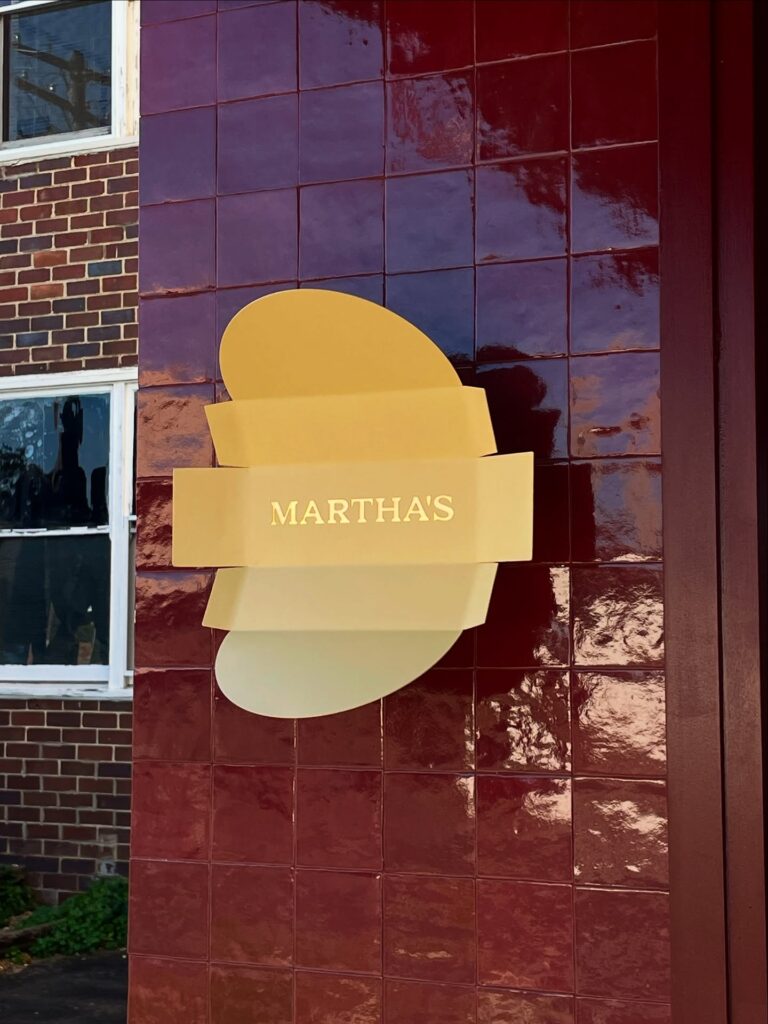
On his dream collaborator
I’ve always wanted to do the Hermès windows [since] I started out doing visual merchandising. Or maybe a Rimowa artist collaboration, that would be pretty cool.
See more of Esquire’s Studio Sessions:
Del Water Gap on Chasing the Chimera
Sons Of The East talks music and life on the road
Daniel Domig’s humanoid houseplants




